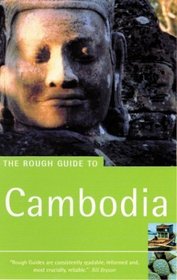Search -
The Rough Guide to Cambodia
The Rough Guide to Cambodia
Author:
INTRODUCTION Though much less visited than neighbouring Thailand, Vietnam or Laos, Cambodia is fast establishing itself on the Southeast Asian tourist trail. The stunning temples of Angkor are the obvious draw for most visitors, but the country has much else to offer: a smattering of golden undeveloped beaches, unspoilt forests, a balmy climate... more »
Author:
INTRODUCTION Though much less visited than neighbouring Thailand, Vietnam or Laos, Cambodia is fast establishing itself on the Southeast Asian tourist trail. The stunning temples of Angkor are the obvious draw for most visitors, but the country has much else to offer: a smattering of golden undeveloped beaches, unspoilt forests, a balmy climate... more »
ISBN-13: 9781858288376
ISBN-10: 1858288371
Publication Date: 8/2002
Pages: 368
Rating: ?
ISBN-10: 1858288371
Publication Date: 8/2002
Pages: 368
Rating: ?
0 stars, based on 0 rating
Genres:




